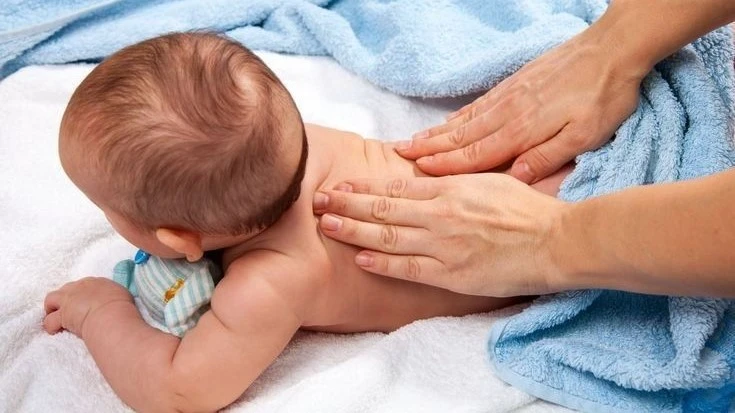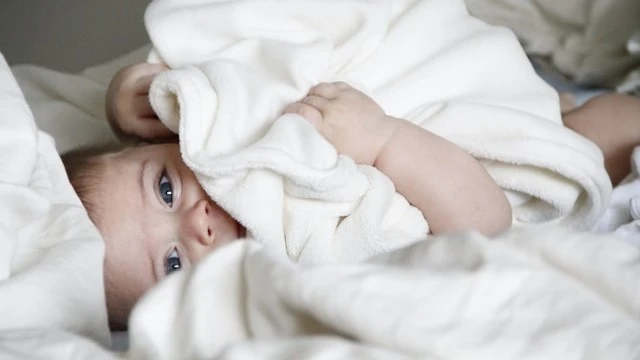Did you know that by the time babies reach six months, about 60% of them can sleep for six straight hours at night? Incredible, right? But let’s be honest, for many of us, getting to that milestone feels like climbing Mount Everest in flip-flops!
One of the toughest challenges I faced was the constant battle to get my baby to sleep without relying on endless rocking or nursing. I’d finally lay her down, only to have her pop those little eyes open the second her head touched the mattress. Sound familiar?
Here’s the good news: teaching your baby to self-soothe is totally possible, and trust me, it’s a game-changer. By understanding how to teach baby to self soothe, you’ll notice a big improvement in their sleep patterns.
Not only does it mean more sleep for you, but it’s also a crucial skill for your baby’s emotional development. This knowledge helps establish long-term benefits for both you and your baby. Let’s dive into why self-soothing matters, when your baby can learn it, and how to make it happen! By the end of this, you’ll feel more confident in guiding your baby to self-soothe.
Why Is Self-Soothing Important?
Self-soothing isn’t just about giving you more sleep (although, let’s be real, that’s a huge perk!). It’s also a critical skill for your baby’s emotional and developmental growth. Babies who learn to self-soothe can regulate their emotions better as they grow up.
According to Dr. Harvey Karp, author of The Happiest Baby on the Block, “Teaching your baby to self-soothe helps them develop confidence and independence.”
In practical terms, self-soothing means your baby can drift back to sleep on their own without needing you to intervene. This fosters healthier sleep patterns for both of you.
Plus, as your baby becomes a toddler, they’ll have an easier time managing tantrums and setbacks because they’ve already developed some emotional coping skills.
Beyond sleep, self-soothing lays the foundation for a lifetime of resilience. Babies who can calm themselves tend to be less anxious and more adaptable in stressful situations. This skill can even improve their ability to focus and manage their energy levels as they grow older. It’s not just about surviving the baby years—it’s about thriving well into childhood and beyond.

Benefits of Self-Soothing:
- More consistent sleep for baby and parents
- Improved emotional regulation
- Reduced nighttime awakenings
- Fosters independence and self-confidence
- Promotes long-term stress management skills
- Enhances cognitive development through better quality sleep
- Builds a stronger parent-child bond by reducing sleep-related stress
- Helps babies adapt more easily to changes in routine or environment
And let’s not forget the relief for you. Parenting is exhausting, and having even a few extra hours of uninterrupted sleep can make you feel like a new person. Imagine waking up refreshed and ready to tackle the day—it’s life-changing.
When Can My Baby Learn to Self-Soothe?
Timing is everything, right? You might be wondering, “Is my baby too young? Too old? Am I doing this too soon?” The general consensus among experts is that most babies can start learning to self-soothe around four to six months old. At this stage, they’re developmentally ready to start learning new sleep habits.
But remember, every baby is different. My daughter didn’t show signs of being ready until she was closer to seven months. And that’s okay!
Some babies might even start showing signs earlier, while others may take a bit longer.
Understanding your baby’s unique cues is essential. For instance, some babies may naturally suck their thumb or reach for a blanket, signaling that they’re ready to self-soothe.
In fact, a study by the American Academy of Pediatrics found that babies who self-soothe by six months tend to have fewer sleep disruptions later in childhood. Others might need more time and support to get there. The key is to pay attention to their behavior and progress gradually.

Signs Your Baby Is Ready to Self-Soothe
Ah, the magical moment when your baby starts to self-soothe. It can feel like you’ve hit the jackpot. But what exactly should you be looking for? Here are a few signs that your baby is starting to figure it out:
- They’re able to fall asleep on their own for naps.
- They’ve started to sleep longer stretches at night.
- They seem more settled and less fussy overall.
- They show interest in comfort objects like a blanket or stuffed toy.
- They engage in thumb-sucking or use a pacifier to calm themselves.
- They gently rock themselves or turn their heads side to side to relax.
- Instead of crying outright, they might make soft whimpering sounds or coo as they try to settle down.
- They rely less on you to fall asleep, needing fewer rocking sessions or shorter nursing times before bed.
It’s also important to factor in your baby’s temperament. Some babies are naturally more independent, while others crave constant comfort. Trust your gut here—you know your baby best. Take your time, and don’t feel pressured to rush the process.
8 Self-Soothing Techniques to Help Your Baby
Ready to help your baby master the art of self-soothing? Let’s dive into eight techniques that can make this process smoother for you and your little one. You’ll also discover how to teach baby to self soothe with each method. These methods have been proven to work wonders for me and many other parents I’ve spoken to. Let’s get started!
1. Establish a Consistent Bedtime Routine
Consistency is key! A predictable bedtime routine signals to your baby that it’s time to wind down. This could include a warm bath, a gentle massage, reading a bedtime story, and singing a lullaby.
According to the Sleep Foundation, babies thrive on predictability, and a consistent routine can reduce nighttime fussiness by 30%.
Over time, this routine helps your baby associate these activities with sleep, making it easier for them to relax. Think of it as setting the stage for a peaceful slumber.
2. Create a Sleep-Friendly Environment
Your baby’s sleep space matters more than you think. Make the nursery a soothing haven. Use blackout curtains to block out light, a white noise machine to mimic the comforting sounds of the womb, and a comfortable crib mattress to ensure proper support.
Did you know that a room temperature between 68-72°F is optimal for baby sleep? Dr. Rachel Moon from the American Academy of Pediatrics emphasizes, “A cool yet cozy sleep environment significantly reduces the risk of sleep disruptions and overheating.” These small adjustments can make a world of difference.

3. Gradual Retreat Method
This method is a gentle yet effective way to foster independence. Start by sitting near the crib as your baby falls asleep, then gradually move farther away each night. By night five or six, you’re out of the room altogether!
This approach builds confidence for your baby while giving you a chance to observe their progress. It’s like saying, “I’m here, but I believe in you.”
4. Encourage Thumb-Sucking or Pacifier Use
Thumb-sucking and pacifiers are more than just adorable habits; they’re effective self-soothing tools.
According to pediatric sleep consultant Dana Obleman, “Sucking is a natural reflex that helps babies calm themselves and feel secure.”
If your baby finds comfort in a pacifier, don’t hesitate to offer it. Just remember to begin the weaning process around age two to avoid dental issues down the road.
5. Introduce a Comfort Object
A soft blanket or cuddly toy can work wonders as a transitional object. These items offer a sense of security, especially during nighttime separations. My son adored his stuffed giraffe, and it quickly became his go-to for comfort.
According to the American Psychological Association, comfort objects can reduce nighttime anxiety by up to 40%. Just ensure the object is safe and free of choking hazards.
6. Practice Daytime Soothing
Daytime is the perfect time to practice self-soothing. During naps, allow your baby a few moments to settle themselves. This builds their confidence and reinforces the skill for nighttime.
As pediatrician Dr. William Sears points out, “Daytime practice makes nighttime perfect.”
Start with short intervals and gradually extend the time as your baby becomes more comfortable.
7. Wait Before Responding to Nighttime Cries
This one can be tough—I know it was for me—but it’s essential. When your baby cries at night, wait a few minutes before rushing in. These extra moments give them a chance to settle themselves.
A study by the Journal of Developmental Psychology found that 80% of babies who were given this brief “wait time” learned to self-soothe within two weeks. Remember, you’re teaching them a valuable skill.
8. Use Gentle Touch
Sometimes, all your baby needs is the reassuring presence of your hand. Placing your hand gently on their chest or back can provide comfort without fully picking them up. It’s a subtle way to say, “I’m here, but you can do this on your own.” Over time, this light touch can become a powerful cue for your baby to relax and self-soothe.
How to Teach Your Baby to Self-Soothe
Teaching your baby to self-soothe is a gradual process, but it’s totally doable. Whether you’re just starting or refining your methods, mastering how to teach baby to self soothe is key. Here’s a step-by-step approach that worked for me:
- Start Small: Begin with nap times before moving on to nighttime sleep. This gives your baby practice without the pressure of a full night.
- Create a Routine: Stick to a consistent pre-sleep routine to help your baby recognize sleep cues. Over time, they’ll associate these cues with sleep.
- Use a Transitional Object: Introduce a comfort item like a small blanket or stuffed toy. This can become their go-to soothing tool.
- Be Patient and Consistent: Your baby might resist at first, and that’s okay. Stick to the plan, and don’t give up at the first sign of difficulty.
- Celebrate Small Wins: Did your baby fall asleep on their own even once? Celebrate! Progress takes time, and every small step counts.
FAQs of How to Teach Baby to Self Soothe
The timeline varies from baby to baby. Some may pick it up within a few days, while others might take weeks. The key is consistency and patience. Stick to your chosen methods, and give your baby time to adjust.
Experts recommend waiting until your baby is around four to six months old to start teaching self-soothing. Newborns need close physical comfort and frequent feedings, so self-soothing is not appropriate at this stage.
It’s normal for babies to cry as they adjust to new sleep habits. However, if the crying feels excessive or you’re concerned, consider using gentler methods like the gradual retreat or offering comforting touch. Trust your instincts and prioritize your baby’s emotional well-being.
A Final Thought
Teaching your baby to self-soothe can feel overwhelming, but it’s worth it. By staying consistent and patient, you’re setting your baby up for a lifetime of healthy sleep habits.
Mastering how to teach baby to self soothe requires patience and consistency. Plus, you’ll finally get a chance to enjoy a full night’s sleep—and believe me, that’s priceless.
Got your own tips or funny stories about this journey? Share them in the comments below—we’d love to hear how you approached teaching your baby to self-soothe. Share them in the comments below—we’re all in this together!









